When you start learning to play an instrument, many teachers or band directors recommend you listen to some famous musicians who play the same instrument as you.
Who do you listen to if you play the xylophone? The list below will introduce you to 7 of the most famous xylophone players throughout history.
What is a Xylophone?
A xylophone is a pitched percussion instrument with wooden bars arranged like the keys on a piano. A xylophonist must strike the bars with a mallet to produce sound. Under each bar are metal tubes are known as “resonator tubes.” The tubes help project the sound the instrument makes.
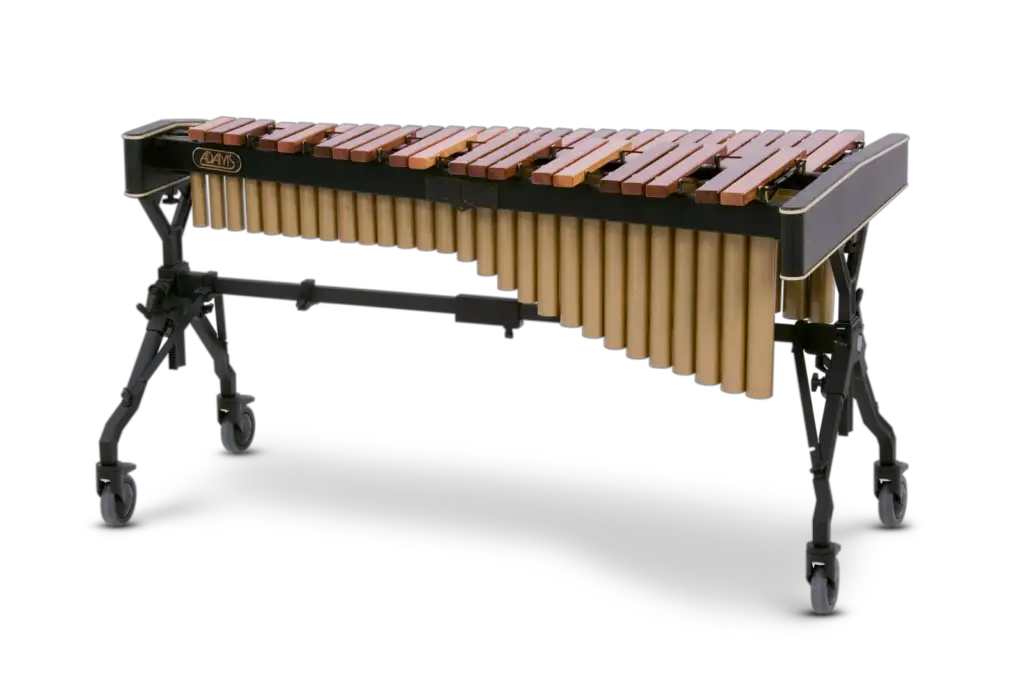
It is common for people to misidentify a xylophone with three similar-looking instruments: the marimba, vibraphone, and glockenspiel.
A marimba looks just like a xylophone; it has wooden bars with resonator tubes underneath every bar. A marimba’s sound is warmer and has a lower range than a xylophone.
A vibraphone looks similar to the xylophone except for two features.
A vibraphone has metal keys made of steel and a foot pedal that a musician steps on to make the notes last for extended periods.
The final instrument that is often mislabeled as a xylophone is the glockenspiel. A glockenspiel is smaller than a xylophone and has metal keys that are pitched higher than the xylophone.
Top Tip: Check out this article to learn more! 7 Instruments Similar to the Xylophone (With Video Samples)
The “xylophone” toy young children have, with keys in rainbow order, is actually a glockenspiel! A saying to remember the difference between a xylophone and a glockenspiel is “Bars of wood, it is good. Bars of steel, it is a ‘spiel”.
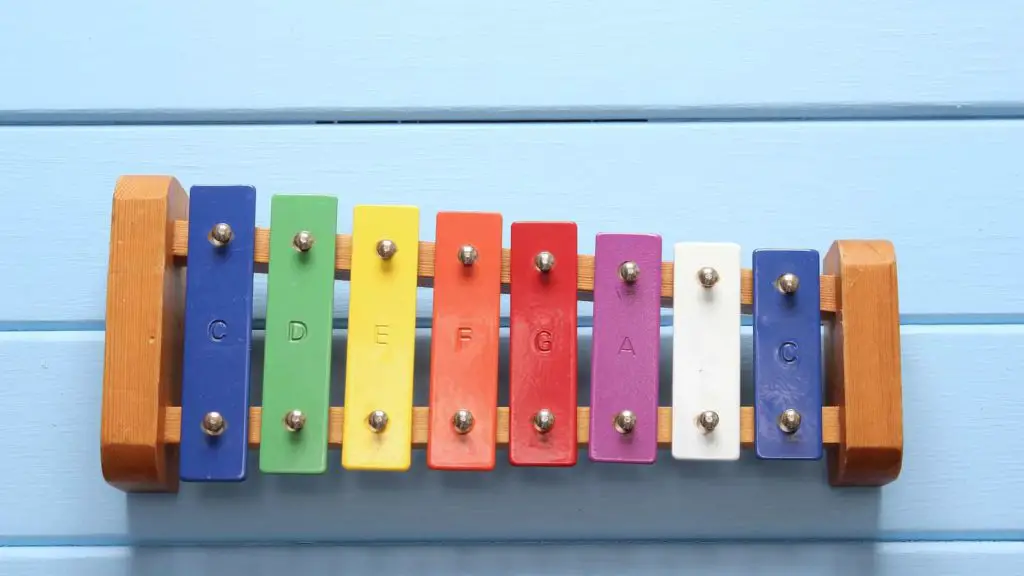
Most percussionists will learn how to play the xylophone along with other instruments in the percussion section.
The seven famous xylophone players in this list are either only xylophonists or are percussionists who can play the marimba and vibraphone as well.
1. George Hamilton Green Jr
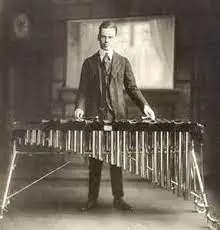
George Hamilton Green Jr was born in Omaha, Nebraska, on May 23, 1893. G.H Green was a composer, xylophonist, and cartoonist as well.
G.H Green was musically gifted since he was a child and the Green family had a history with music. G.H Green’s grandfather and father were band conductors and composers.
Fun Fact: By the age of 4, G.H Green was considered a prodigy on the piano.
By the time he was 11 years old, G.H Green was playing xylophone concerts for audiences of 7,000 to 10,000 people.
He was called the ‘World’s Greatist Xylophonists, a fitting title for such a talented musician.
Following in his grandfather and father’s footsteps, G.H Green composed several xylophone solos for ragtime, including “ The Whistler,” “Jasper,” and “Cross Corners.”
G.H Green wrote a xylophone method book, George Hamilton Green’s Introduction Course for Xylophone: A Complete Course of Fifty Lessons.
This book is still being used across the country. You can find the book in music stores, online music supply companies, or on popular websites like sheetmusicplus.com!
G.H Green’s Xylophone Methods Book
Fun Fact: George Hamilton Green Jr and his brothers Lew and Joe were the original sound and music crew for the first three of Walt Disney’s animated cartoons.
G.H Green died on September 11, 1970, but his memory and talent live on. Listen to a musician playing Green’s song “The Whistler” below.
2. Teddy Brown
Teddy Brown’s birth name was Abraham Himmelbrand, and he was born in New York City on May 25th, 1900.
Teddy Brown was a musician, an actor, and a phenomenal entertainer who spent most of his later life performing shows in England.
The xylophone was Brown’s primary instrument, and he played a custom-made xylophone with five octaves and a six-octave one too. Typically xylophones are only four octaves!
Teddy Brown began his musical career playing the xylophone as a member of the New York Philharmonic Orchestra. He then switched to playing more modern and popular music in his early 20s.
Brown moved to London in 1925 to play percussion for the group Joseph C. Smith and His Orchestra. In 1926, Teddy Brown created his own orchestra and played at famous British nightclubs like the Café de Paris and the historic Kit Kat Club (a famous jazz and dance hall in London).
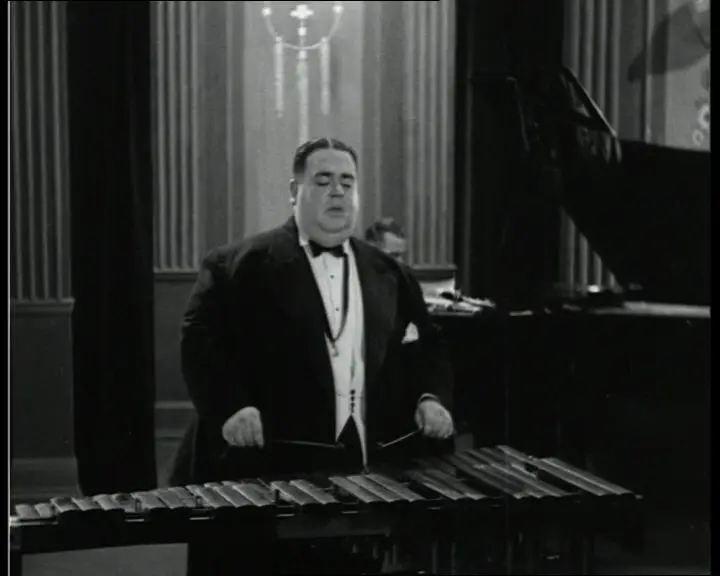
Teddy Brown was known for his out-of-this-world skill with the xylophone. He was able to play incredibly fast with perfect precision and had a trick where he would do a run on the xylophone while spinning around without missing a single note.
The trick was a crowd pleaser because Teddy Brown was a very large man. He weighed about 400 pounds, which in the early 20th century was rare and something visitors to a sideshow carnival would find (a Fat Man or Fat Lady).
As a brilliant and professional performer, Teddy used his weight to his advantage when promoting his shows. At clubs or on TV, an announcer would say, “And now for the one and only Teddy Brown (There’s quite a lot of him!)”.
Brown was an actor as well as a xylophonist and performed in Elstree Calling (1932), directed by Alfred Hitchcock, and the Danish film Københav, Kalundborg og – ? in 1934.
On April 29, 1946, Teddy Brown had a fatal heart attack in his hotel room after a show at the Wolverhampton Hippodrome at the age of 45. Check out the video below to see and hear the one and only Teddy Brown.
3. Yoichi Hiraoka
Yoichi was born on August 16, 1907, in the Hyogo Prefecture in Honshu, Japan, near Osaka.
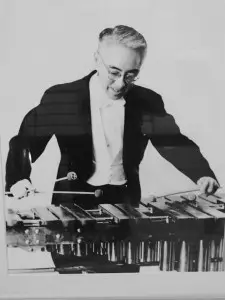
Yoichi Hiraoka began his musical career by learning the piano, but his hands were too small, and the span of his hands couldn’t reach an octave. In an effort to learn to play music, he switched instruments and learned how to play a Japanese-style xylophone known as the mokkin.
Above is a depiction of a mokkin from a Kunimitsu print. Located at the Museum of Fine Arts, Boston
After hearing a recording of Western xylophone music, Yoichi Hiraoka decided to learn how to play the instrument.
There was one issue, the xylophone we use today wasn’t used in Japan at the time. His first xylophone, a secondhand xylophone, fell apart while rehearsing in a jazz band. His family sold an heirloom flute for money to buy a better quality instrument for Yoichi to continue his study of music.
In 1930, Yoichi passed an audition with The National Broadcasting Company (NBC) and would play music for 15 minutes during a broadcast. He remained with NBC for 11 years, and many people were said to have woken up every day to the sounds of Yoichi’s xylophone music.
World War II made him leave NBC after playing for almost 4,000 days with the company. Once he returned to Japan, he was named a national hero and gave daily performances in person or over the radio.
In 1963 Yoichi Hiraoka moved to America, eventually becoming a US citizen before his death on July 13, 1981. Below is a recording of Yoichi Hiraoka playing Mozart’s Eine kleine Nachtmusik on the xylophone.
4. Ruth Underwood
Ruth Underwood is the first female on this list of famous xylophone artists.
She was born on May 23, 1946, and plays the xylophone, marimba, vibraphone, and other percussion instruments.
Ruth studied classical percussion music at Ithaca College music conservatory and the Juilliard School. While in New York City, Ruth Underwood would go to Frank Zappa and The Mothers of Invention shows during his residency at the Garrick Theater in 1967.
In 1968, Ruth married Ian Underwood, the saxophonist/keyboardist for Frank Zappa and The Mothers of Invention.
Following that, she became a percussionist for the band. Ruth and Ian divorced after a year of marriage, but Ruth kept Underwood’s last name and worked with Zappa and his gang from 1968 to 1982.
You can hear Underwood playing in around 30 different recordings with Frank Zappa and the Mothers of Invention. Her skills can be heard in the song “St. Alfonzo’s Pancake Breakfast” from the 1974 album Apostrophe (‘).
Ruth Underwood retired from performing in order to concentrate on her family and her two children (also musicians). Frank Zappa died from complications related to his two-year fight with prostate cancer at the age of 52 in 1993.
In 1993, Underwood learned that Zappa was ill and called him after not speaking to him in over 14 years, and he asked Ruth to visit him at his home.
One day Zappa asked if Ruth Underwood would let him record her playing. That surprised Underwood, who said that she had not touched a pair of xylophone mallets since 1977. After several days of recordings, the two split ways, and Zappa died a few weeks later.
Above is a video of Ruth Underwood performing the song Approximate with the Mothers of Invention in 1974.
5. Ian Finkel
Ian Finkel was a xylophonist, entertainer, and author who was born on August 13, 1948.
Finkel was the son of Emmy award-winning actor Fyvush Finkel. The passion for entertainment was genetic; both Ian and his brother Elliot were entertainers.
Ian Finkel was educated at the Mannes School of Music at the New School in New York City.
Ian was known as one of the greatest xylophone virtuosos globally. He previously worked and played for actor, comedian, and writer Sid Caesar, and he worked with Puerto Rican dance mambo and Latin jazz musician Tito Puente.
🎵 Note: Are you beginning to see why learning to master the Xylophone is one of the hardest percussion instruments to take on? Want to know what are the other difficult percussion instruments to master? Read this article: 6 of the Hardest Percussion Instruments to Learn
Finkel played as a member of the New York Philharmonic for many years and was a member of the accompanying orchestras that worked with Diana Ross, Whitney Houston, and Michael Jackson.
Finkle had several concert tours in the U.S, Korea, Mexico, Japan, Canada, and England during his life.
As a multi-talented performer, Finkel wrote several plays and musicals as well as three books and many short stories. His last book was released in 2009 and was called “You’re Not Supposed to Be Here.”
Sadly Ian Finkel died on November 16, 2020, from the coronavirus at the age of 72. Below is a recording of Finkle performing in a show in 2018, two years before he passed.
6. SK Kakraba
The next famous xylophone player is SK Kakraba. He was born in 1976 and is a Ghanaian musician specializing in playing the traditional gyil.
The gyil is a xylophone that uses gourds as resonators which creates a buzzing sound. This instrument is commonly found in northern Burkina Faso and Ghana, the northern Ivory Coast in West Africa, and southeast Mali.
The gyil
SK Kakraba was taught by a gyil player in Ghana how to build the instrument. A process that involves finding specific wood for the bars and drying gourds, and adding holes to the gourds to create different pitches.
Kakraba is from the Lobi tribe, and for them, the gyil and its players are respected and can often be heard at funerals and weddings.
Kakraba comes from a family of gyil musicians. His mother and father play the gyil, and his uncle Kakraba Lobi is considered to be one of the greatest gyil players.
For many years now, SK Kakraba has been a gyil instructor at the University of Ghana’s International Centre for African Music and Dance. He is known for his teaching abilities, talent, and desire to preserve and share the traditional music of Ghana with a global audience.
The LA Weekly newspaper has called SK Kakraba one of the “world’s greatest xylophone players.” He has had several international tours playing the gyil.
SK Kakraba has released several albums, including SK Kakraba Band (Holy Page) in 2013, and the most recent album was Songs of Paapaeye (Awesome Tapes From Africa) which was released in 2015.
Check out the video below to hear Kakaraba playing the gyil and listen to the instrument’s unique sound compared to a western xylophone.
7. Evelyn Glennie
The final xylophone player on this list is Evelyn Glennie. Dame Evelyn Glennie was born in Aberdeenshire, Scotland, on July 19, 1965.
She is a percussionist who initially began her music career as a pianist and clarinetist. She studied at the Royal Academy of Music and was a member of the National Youth Orchestra of Scotland.
Evelyn Glennie travels worldwide, playing as a soloist with a large variety of orchestras and musicians. When she isn’t performing, Glennie works as a motivational speaking coach.
Fun Fact: During the 2012 London Olympic Games, Glennie was selected to play during the opening ceremony. In 2015 she was one of the two musicians awarded the Polar Music Prize.
The Polar Music Prize is an international award from Sweden that is given to one composer, one inventor, and one contemporary musician.
The Polar Music Prize has been referred to as the “Nobel Prize of Music.” Previous winners of the Polar Music Prize include Paul McCartney, Joni Mitchell, Led Zeppelin, Björk, Yo-Yo Ma, Bruce Springsteen, and Grandmaster Flash.
Along with being an internationally known and recognized musician, Evelyn Glennie is a representative for the deaf and hearing impaired community.
Glennie has been profoundly deaf since she was 12 years old but hasn’t let her disability stop her from playing music. She often performs barefoot while on stage and in recording sessions so she can feel the music.
She trained herself to hear music through other parts of her body, not just the ears. In 2003, Evelyn Glennie was a TED Talk speaker whose presentation, “How To Truly Listen,” is something every musician should listen to. Check out the video below of Dame Evelyn Glennie performing an excerpt of Corelli’s La Folia.
We encourage you to take some time to watch and listen to Glennie’s 2003 TED Talk below.
Any musician at any skill level will learn something from this presentation.
8. Jacques Delecluse
Jacques Delecluse is considered one of the most distinguished xylophonists of the 20th century. He was born in France in 1933 and began his musical career as a percussionist in the French military band.
Delecluse studied at the Paris Conservatoire and was awarded first prize in xylophone and percussion.
Delecluse’s career took off after winning the Geneva international percussion competition in 1955. He performed as a soloist with several prestigious orchestras and collaborated with many famous composers, including Pierre Boulez and Igor Stravinsky.
Delecluse was also a renowned educator, and his teaching methods are still used by percussionists today.
9. Keiko Abe
Next up is Keiko Abe a Japanese Marimba player who has had a major impact on the world of percussion.
Note: Even though they are not technically the “Xylophones,” we include Marimbas and Vibraphone players in this list. If you want to know the difference, you can read about that here.
Born in 1937, Abe started playing the Marimba at a young age and went on to study at the Toho Gakuen School of Music in Tokyo.
Abe has been credited with revolutionizing the Marimba by incorporating jazz and world music influences into her performances. She has performed as a soloist and collaborated with many famous musicians, including percussionist Evelyn Glennie and flutist James Galway.
10. Giovanni Hidalgo
Giovanni Hidalgo is a Puerto Rican percussionist who is considered one of the greatest conga drummers of all time. He is also a talented xylophonist and has been known to perform on both instruments in the same performance.
Hidalgo was born in 1963 and began playing the drums at a young age. He went on to study at the Escuela Nacional de Bellas Artes in Puerto Rico and later toured with several famous musicians, including Carlos Santana and Willie Colon. Hidalgo’s unique playing style has earned him a reputation as a master of percussion.
11. Mike Balter
Mike Balter is an American xylophonist who is known for his innovative playing style. He was born in 1950 and began playing the xylophone at a young age. Balter went on to study at the Indiana University School of Music and later became a percussion instructor at several universities.
Fun Fact: Balter noticed a lack of high-quality affordable xylophone mallets on the market so he decided to fix that! He now has his own line of professional mallets and drumsticks.
Balter is best known for his work as a jazz xylophonist and has collaborated with many famous musicians, including saxophonist Stan Getz and pianist Bill Evans. He is also a respected educator and has published several instructional books on xylophone playing.
12. She-e Wu
She-e Wu is a Chinese xylophonist praised for her virtuosity and innovative playing style. She was born in Taipei in 1963 and began playing the xylophone at a young age. Wu went on to study at the Taipei National University of the Arts and later won several international competitions.
Wu has performed as a soloist and collaborated with many famous musicians, including percussionist Evelyn Glennie and the London Symphony Orchestra. She is also a respected educator and has taught at several universities.
13. Ney Rosauro
Ney Rosauro is a Brazilian percussionist and xylophonist who has significantly impacted the world of classical music. Born in 1952, Rosauro began playing the xylophone at a young age and went on to study at the Universidade Federal do Rio de Janeiro. He has performed as a soloist with numerous symphony orchestras and has collaborated with famous composers such as Astor Piazzolla and Kaija Saariaho.
Fun Fact: Ney Rosauro is the first percussionist in the world to have composed a concerto for Marimba and orchestra. What a groundbreaking achievement in the classical music world!
Through his innovative compositions and virtuosic performance style, Ney Rosauro has helped to elevate the status of the marimba and percussion instruments in the classical music genre, paving the way for future generations of percussionists.
Rosauro is also a respected educator and has taught at several universities, including the Manhattan School of Music in New York. He has published several instructional books on xylophone playing and has been credited with developing new playing techniques for the instrument.
14. Steve Reich
Steve Reich is an American composer and xylophonist who has been a major force in the development of minimal music. Born in 1936, Reich began playing the xylophone at a young age and went on to study at Mills College in California. He is best known for his use of repetitive patterns and phasing in his compositions, which have significantly impacted the world of contemporary music.
Reich has also been a prolific performer on the xylophone and has collaborated with many famous musicians, including percussionist Evelyn Glennie and the Kronos Quartet. He has won several awards for his music, including the Pulitzer Prize for Music in 2009.
15. Percussion Group Cincinnati
Percussion Group Cincinnati is a contemporary ensemble specializing in performing percussion and xylophone music. Founded in 1979, the group has been credited with revolutionizing the world of classical music by incorporating new and innovative playing techniques into their performances.
The group has performed all over the world and has collaborated with many famous composers and musicians. They have also recorded numerous albums and have been praised for their dynamic and virtuosic performances.
16. Gordon Stout
Gordon Stout is an American percussionist and xylophonist who has been a major influence on the world of contemporary music. Born in 1952, Stout began playing the xylophone at a young age and went on to study at the Eastman School of Music in New York. He has performed as a soloist and has collaborated with many famous musicians, including saxophonist Stan Getz and pianist Bill Evans.
Fun Fact: Stout is incredibly interesting to watch! He incorporates extended techniques, such as singing and playing the marimba at the same time, using multiple mallets, and playing unconventional playing positions to create unique and captivating sounds.
Stout is also a respected educator and has taught at several universities, including the University of Michigan and the Eastman School of Music. He has published several instructional books on xylophone playing and has been credited with developing new playing techniques for the instrument.
17. Alejandro Vinao
Alejandro Vinao is a Spanish treasure in the world of contemporary music.
Born in 1974, he started playing the xylophone at a young age and honed his skills at the Real Conservatorio Superior de Musica in Madrid.
Throughout his career, Vinao has had the opportunity to collaborate with the likes of famous percussionist Evelyn Glennie and the London Symphony Orchestra.
His music is known for its virtuosity and innovative approach to the xylophone and percussion, which has earned him well-deserved recognition and several awards.
Vinao loves collaborating with other musicians across various genres, including classical, jazz, and experimental music. This brings such a unique and diverse perspective to his compositions. Additionally, Vinao has been a strong advocate for the inclusion of percussion in classical music and has been instrumental in helping to raise the profile of this often-overlooked genre.
18. Roy Ayers
Roy Ayers is next on our list. A vibraphonist, a composer, and all around American musician. Born in 1940, he started playing the vibraphone as a small boy and quickly became one of the leading voices in jazz and R&B music.
He has recorded over 50 albums and collaborated with numerous musicians, including Herbie Hancock, Fela Kuti, and Mary J. Blige.
Ayers is perhaps best known for his 1976 hit single “Everybody Loves the Sunshine,” which has since become a classic and a staple of soul and jazz music. He has been praised for his signature style, which blends elements of jazz, funk, and R&B into a unique and innovative sound.
Ayers is coined “the pioneer of acid jazz,” and is often credited with helping to popularize this genre.
Even to this day, Roy Ayers continues to showcase his musical talent through touring, performing, and recording, solidifying his status as one of the all-time greatest vibraphonists.
We hope this article has been helpful and informative for you in your musical journey. Please let us know if there is anything that we could add or change to make this article a better resource for our readers.
Please e-mail us at: [email protected] to let us know how we are doing!
Disclaimer: This post may contain affiliate links. We only recommend high-quality products that are used and recommended by real musicians. If you use these links to buy something we earn a small commission.
